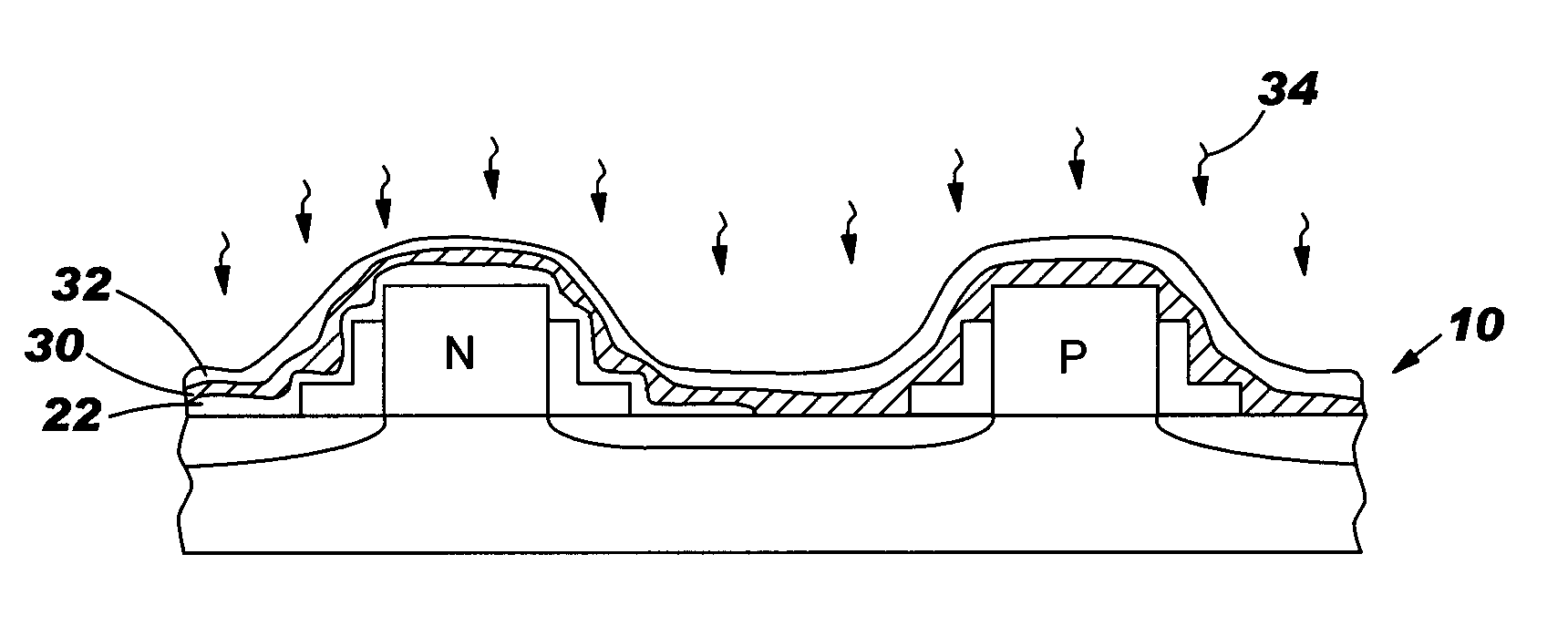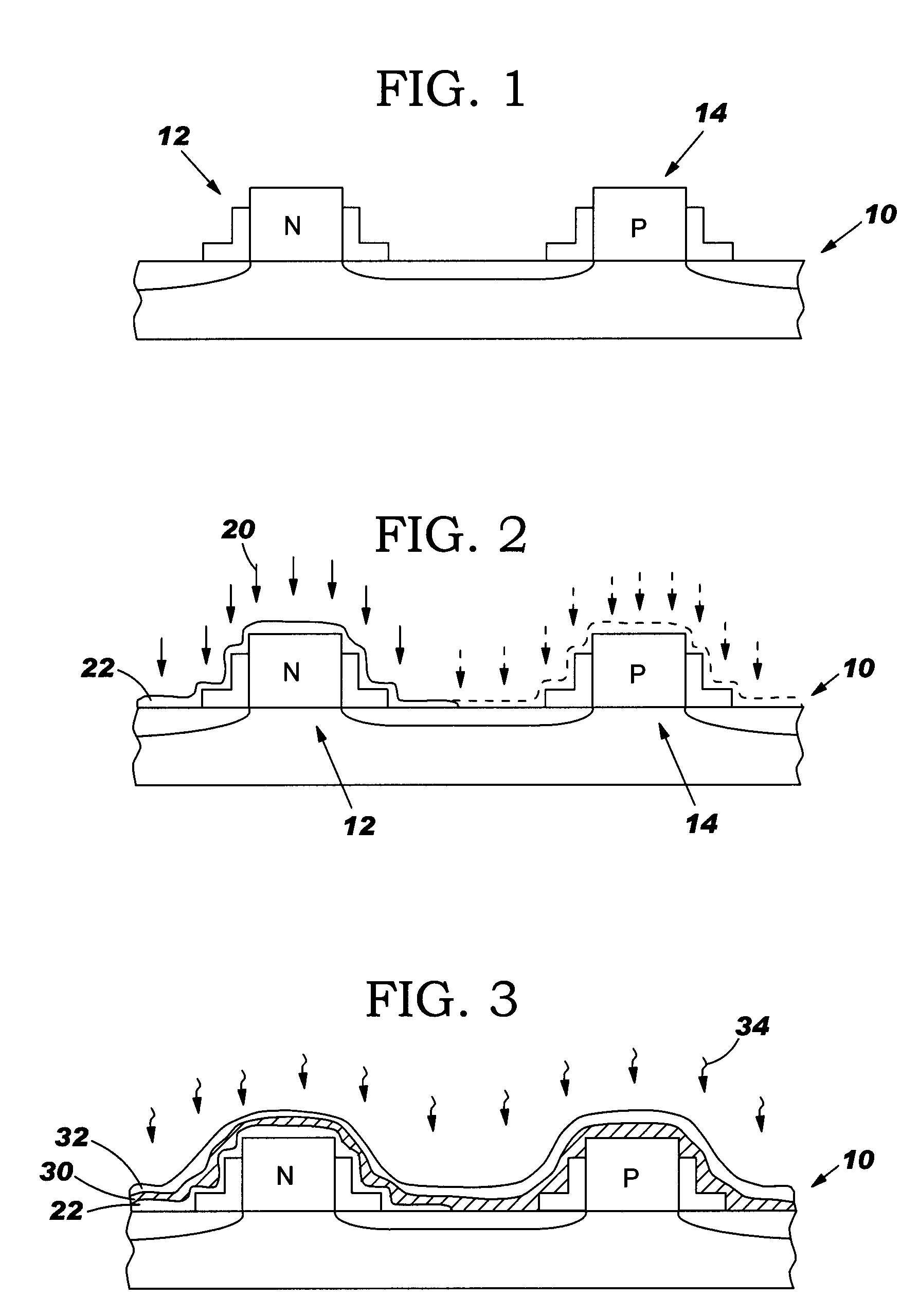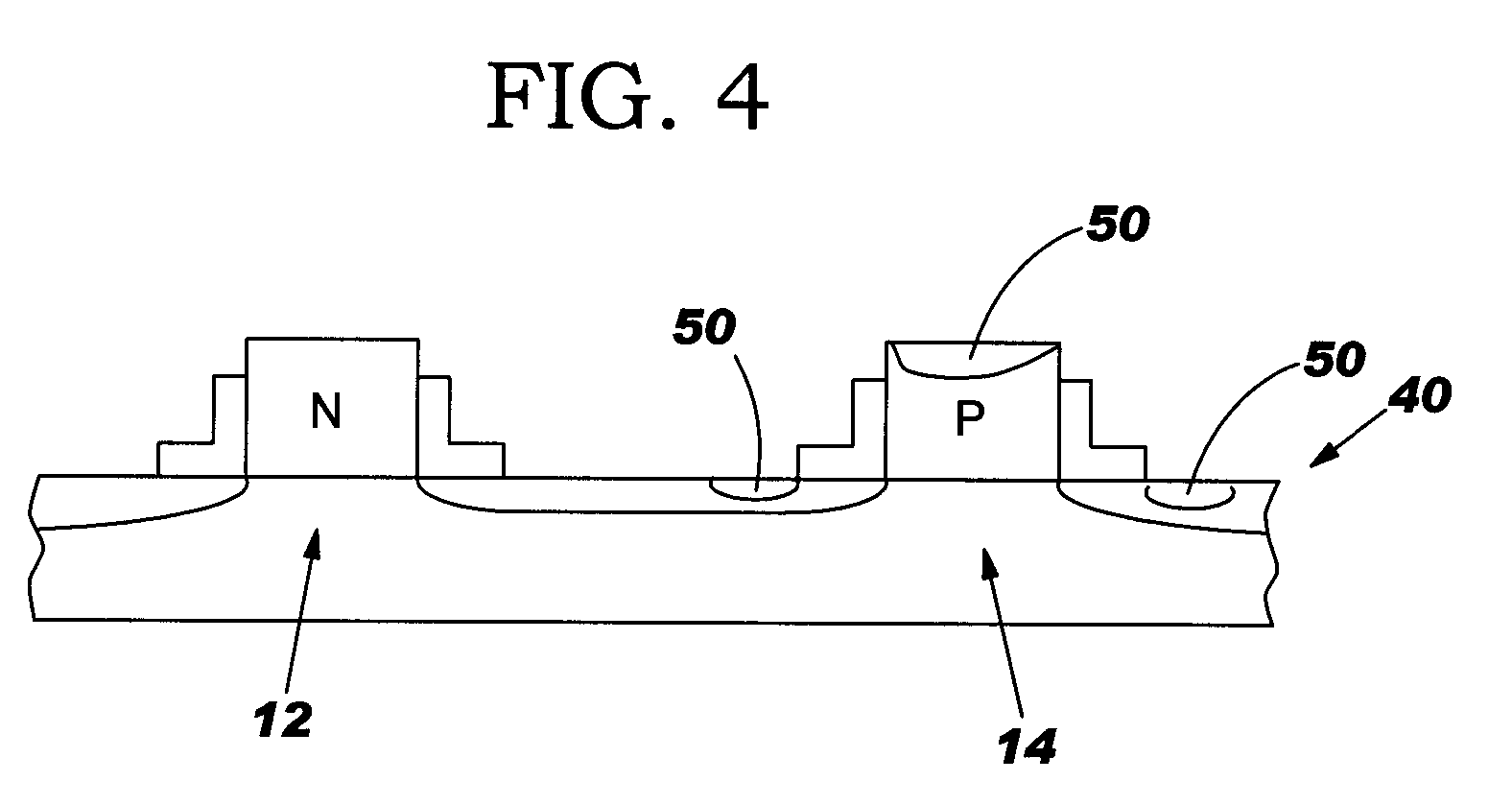Selective salicidation methods
a technology of selective salicidation and salicidation method, which is applied in the direction of basic electric elements, electrical equipment, semiconductor devices, etc., can solve the problems of limiting applicability, complex process, and many steps in the process, so as to prevent silicide formation and prevent silicide formation
- Summary
- Abstract
- Description
- Claims
- Application Information
AI Technical Summary
Benefits of technology
Problems solved by technology
Method used
Image
Examples
Embodiment Construction
[0017] With reference to the accompanying drawings, FIGS. 1-4 illustrate a method for selective salicidation of a semiconductor device 10. As shown in FIG. 1, a first step includes forming (or providing) a first structure 12 having an n-type dopant at the surface in a p-type well, and a second structure 14 having a p-type dopant at the surface in a n-type well. The n-type dopant may include, for example, phosphorous and / or arsenic, and the p-type dopant may include, for example, boron and / or boron di-flouride. In one embodiment, first structure 12 is an n-type field effect transistor (NFET) 12 and second structure 14 is a p-type FET (PFET). It should be recognized, however, that structures 12, 14 may be any type of doped structure upon which selective salicidation is desired. First and second structure 12, 14 may be formed by any now known or later developed processing. For example, formation of the actual structures 12, 14, and then doping by implanting the particular dopants. In t...
PUM
| Property | Measurement | Unit |
|---|---|---|
| thickness | aaaaa | aaaaa |
| temperature | aaaaa | aaaaa |
| sheet resistance | aaaaa | aaaaa |
Abstract
Description
Claims
Application Information
 Login to View More
Login to View More - R&D
- Intellectual Property
- Life Sciences
- Materials
- Tech Scout
- Unparalleled Data Quality
- Higher Quality Content
- 60% Fewer Hallucinations
Browse by: Latest US Patents, China's latest patents, Technical Efficacy Thesaurus, Application Domain, Technology Topic, Popular Technical Reports.
© 2025 PatSnap. All rights reserved.Legal|Privacy policy|Modern Slavery Act Transparency Statement|Sitemap|About US| Contact US: help@patsnap.com



